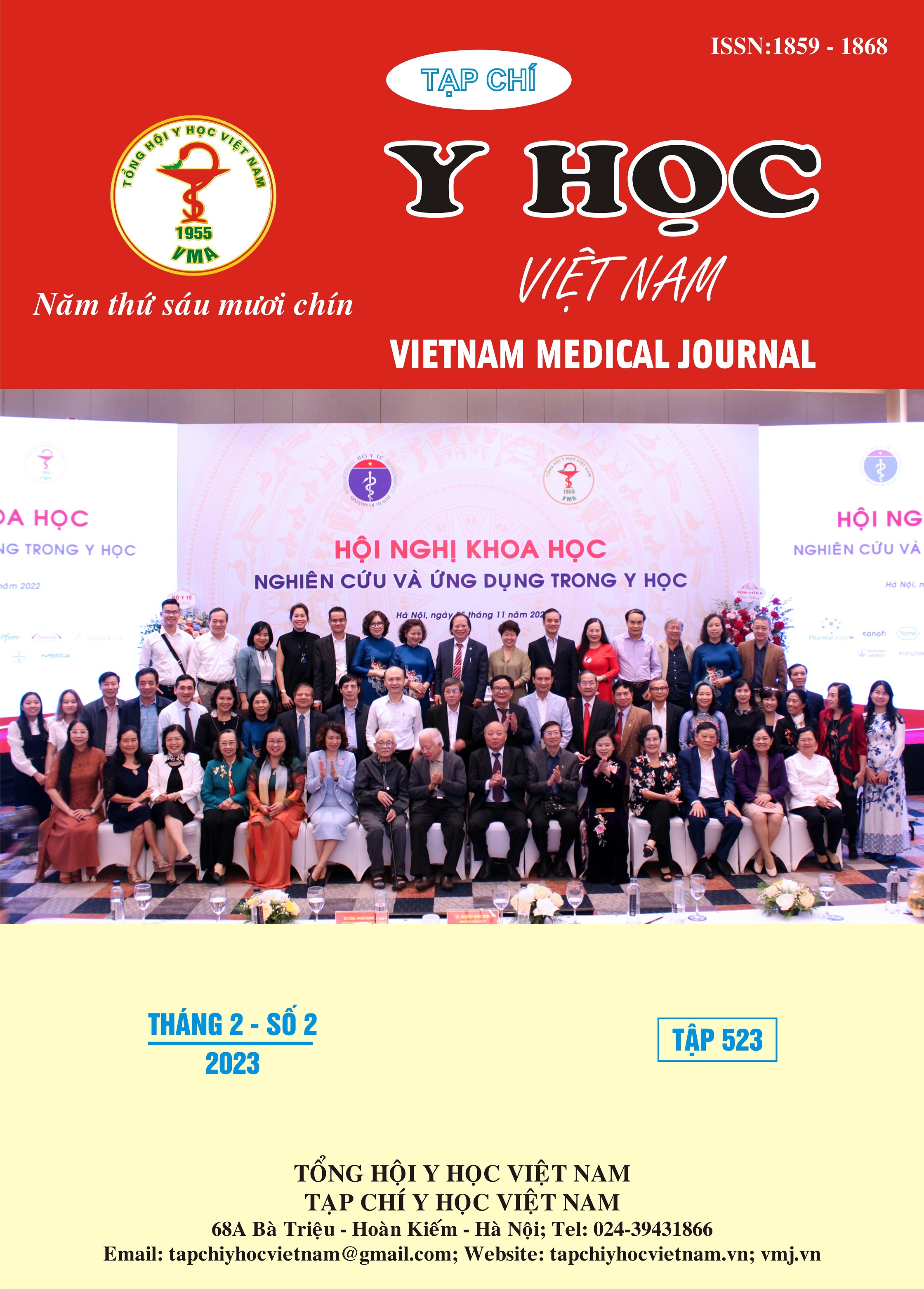THE OUTCOME OF IN VITRO FERTILIZATION IN PATIENTS WITH DIMINISHED OVARIAN RESERVE AT HANOI MEDICAL UNIVERSITY HOSPITAL
Main Article Content
Abstract
Objective: Evaluated the outcome of in vitro fertilization and investigate some factors related to the results of in vitro fertilization in patients with diminished ovarian reserve. Subject and Methods: Retrospective description study in 115 patients diagnosed with diminish ovarian reserve base on POSEIDON criteria (AMH < 1.2 ng/ml and/or AFC < 5) including Group 1: 39 young patients (<35 years old) and Group 2: 76 elderly patients (≥35 years old) who undergoing infertility treatment by IVF at Center of IVF and Tissue engineering, Hanoi Medical University Hospital from January 2019 to December 2020. The parameters of IVF outcomes including the number of retrieved oocytes, the number of embryos, the cumulative clinical pregnancy rate, the cumulative live birth rate. Results: Overall clinical pregnancy rate is 32.17%, live birth rate is 28.7%. The clinical pregnancy rate and live birth rate in the young group (38.89%; 33.33%) were higher than the clinical pregnancy rate and live birth rate in the older group (29.11%; 26.58%), however the difference is not statistically significant. Wife's age, basal FSH level, and average number of oocytes did not affect pregnancy outcome.
Article Details
Keywords
diminish ovarian reserve, POSEIDON criteria, number of retrieved oocytes, clinical pregnancy rate, live birth rate
References
2. Poseidon Group (Patient-Oriented Strategies Encompassing IndividualizeD Oocyte Number), Alviggi C, Andersen CY, et al (2016). A new more detailed stratification of low responders to ovarian stimulation: from a poor ovarian response to a low prognosis concept. Fertil Steril. 105(6):1452-1453.
3. Esteves SC, Yarali H, Vuong LN, et al (2021). Low Prognosis by the POSEIDON Criteria in Women Undergoing Assisted Reproductive Technology: A Multicenter and Multinational Prevalence Study of Over 13,000 Patients. Front Endocrinol (Lausanne). 12:630550.
4. Li Y, Li X, Yang X, et al (2019). Cumulative Live Birth Rates in Low Prognosis Patients According to the POSEIDON Criteria: An Analysis of 26,697 Cycles of in vitro Fertilization/Intracytoplasmic Sperm Injection. Front Endocrinol (Lausanne). 10:642.
5. Lê Long Hồ, Phạm Dương Toàn (2019). Kết quả thụ tinh ống nghệm của nhóm bệnh nhân “tiên lượng thấp” theo phân loại POSEIDON. Tạp chí Phụ sản.17:68-74.
6. Liu X, Xu J, Bi L, Liu P, Jiao X (2021). Growth Hormone Cotreatment for Low-Prognosis Patients According to the POSEIDON Criteria. Front Endocrinol (Lausanne). 12:790160.
7. Chang Y, Li J, Li X, Liu H, Liang X (2018). Egg Quality and Pregnancy Outcome in Young Infertile Women with Diminished Ovarian Reserve. Med Sci Monit.24:7279-7284.
8. Abdullah RK, Liu N, Zhao Y, et al (2020). Cumulative live-birth, perinatal and obstetric outcomes for POSEIDON groups after IVF/ICSI cycles: a single-center retrospective study. Sci Rep. 2020;10(1):11822
9. Luna M, Grunfeld L, Mukherjee T, Sandler B, Copperman AB (2007). Moderately elevated levels of basal follicle-stimulating hormone in young patients predict low ovarian response, but should not be used to disqualify patients from attempting in vitro fertilization. Fertil Steril. 2007;87(4):782-787.


